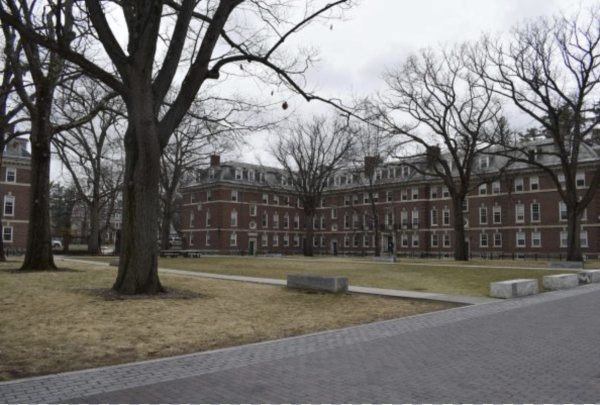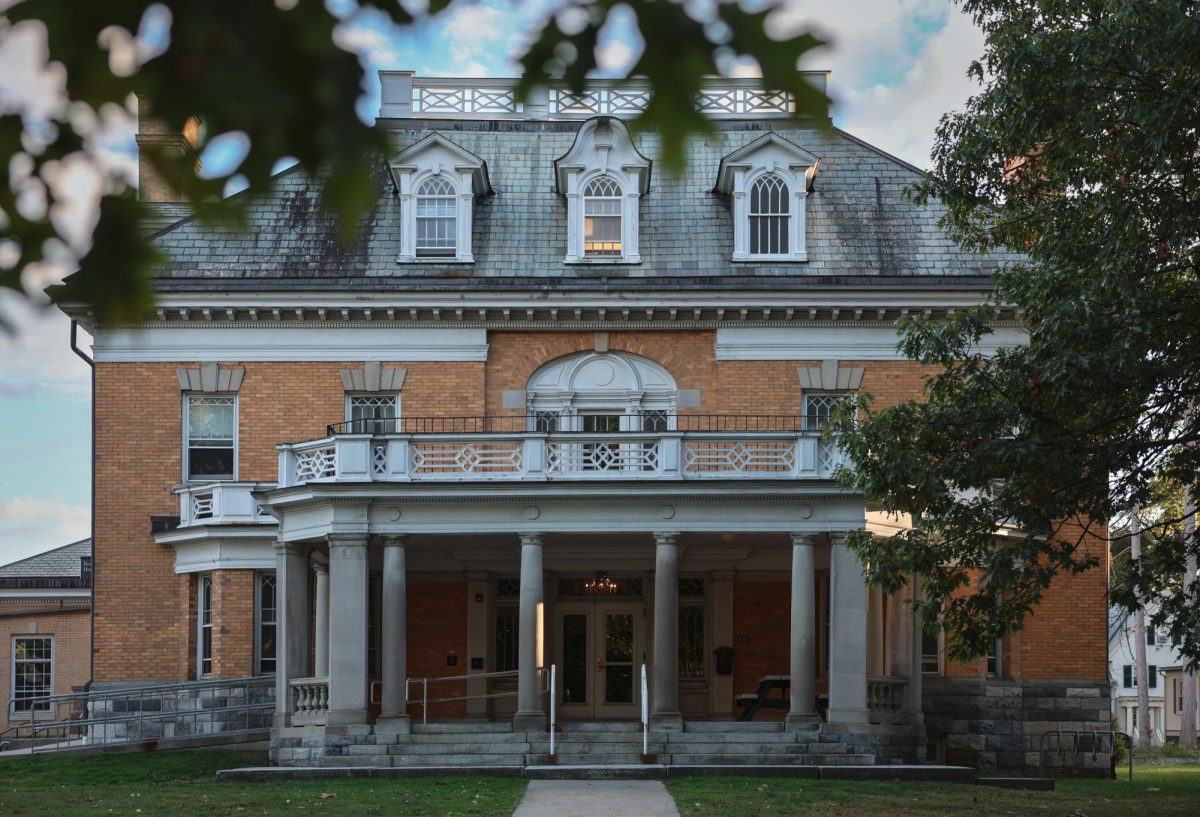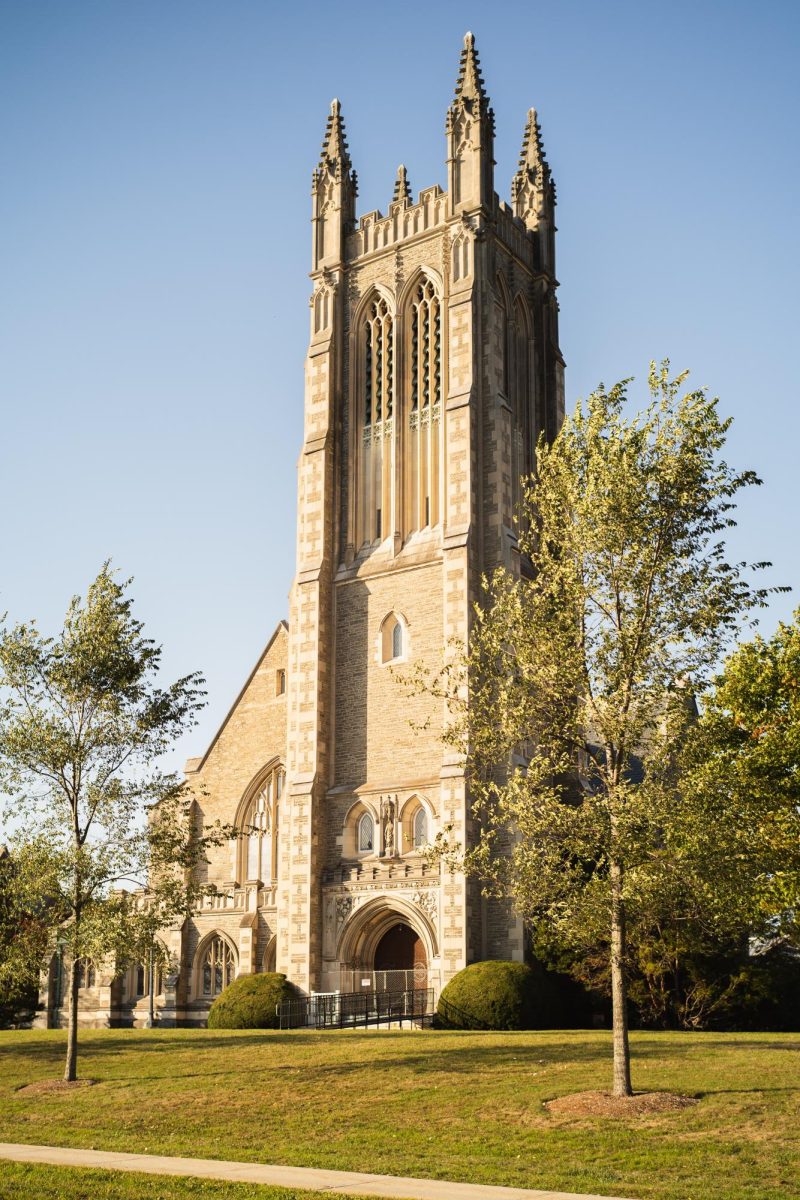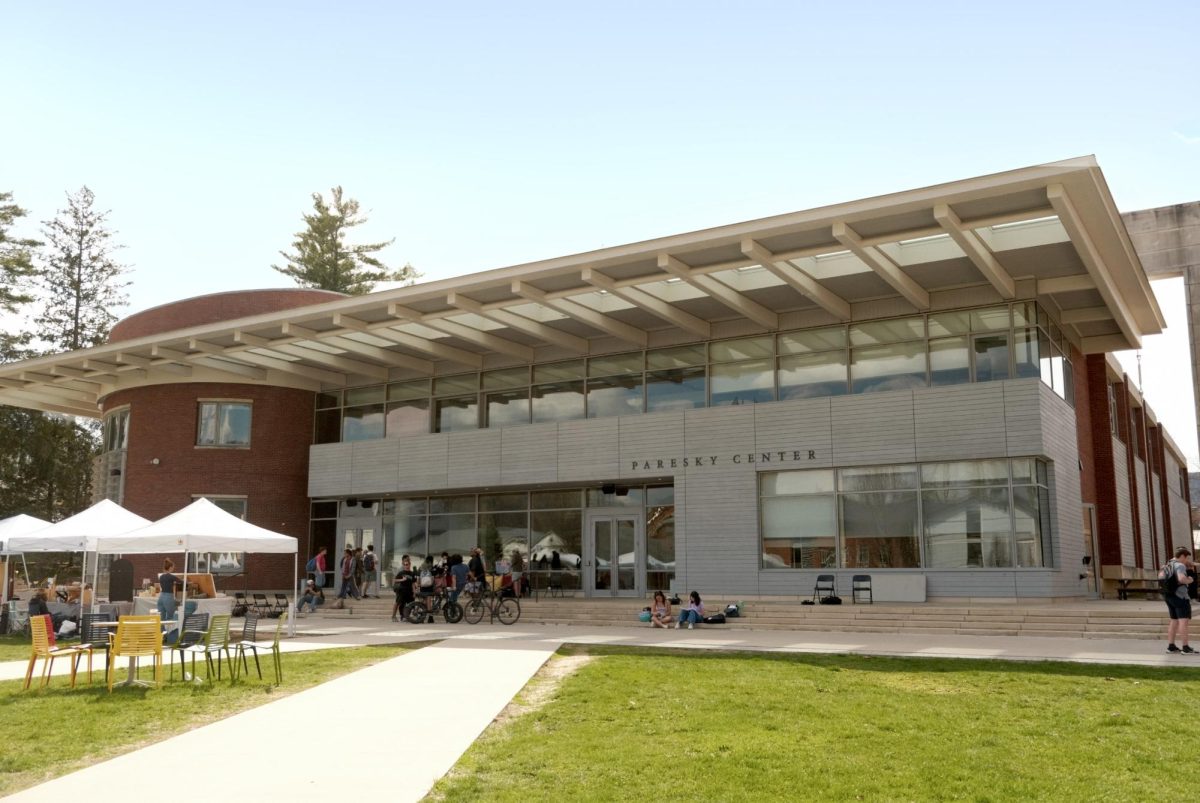
Seven of eight student members of the Junior Advisor Advisory Board (JAAB) — a group of former and current Junior Advisors (JAs) elected to train and support JAs — have resigned, following fallout from the College’s response to the passing of Toby Woods ’27 on Feb. 21, as well as years of declining interest in and criticism of the role. While the resignations leave the future of the JA program uncertain, administrators said the College remains committed to maintaining it for future years.
“While I knew I would experience inevitable struggles, I imagined feeling supported by those whom I work closely with — especially the Dean’s Office,” former JAAB Co-President Pat Klugman ’25 wrote in his letter of resignation, which he provided to the Record. “With this relationship no longer feeling entirely reciprocal, I hereby formally resign as Junior Advisor Advisory Board co-president.”
“In all my love for the JA program, I knew there were moments where I questioned my role’s expectations,” Klugman wrote to the Record. “It wasn’t until the meetings over the last three weeks with the administration that encouraged me to think deeply about what the College was asking from me.”
According to JA Jae Yu ’25, JAs received no direct communication from the College’s administration after the College sent an all-campus email alerting the student body to a campus death on Feb. 21.
“For the first 48 hours, we were grouped in with the rest of the school, but with the JA expectations of taking care of the freshmen,” she said.
On Feb. 23, Klugman and a group of JAs began to plan a walk for first-years to Stone Hill on Feb. 24, he told the Record. Later that day, JA Hannah Yoon ’25, with permission from Dean of First Year Students Christina Walsh, sent an email to the first-year Listserv about the event.
“We are hoping this can be an opportunity for us all to be together as we grieve and remember our classmate, entrymate, and friend Toby Woods,” Yoon’s email read. “We will hold space for our emotions and the memories we share of Toby.”
Walsh, who serves as an advisor to the JA program, sent an email to JAs on the afternoon of Feb. 22, informing them that she was organizing a meeting between JAs and other members of the College’s administration, representatives from the Chaplains office, and members of Campus Safety Services (CSS), the following night to discuss JAs’ experiences. It was the first communication from the administration that the entire class of JAs received following Woods’ passing, Yu said.
“We wanted to be present with the JA group and hold space with and for them,” Walsh said of the event in an interview with the Record.
“We were going in expecting to be told how we should proceed and any guidelines,” Yu said. At the meeting, however, Dean of the College Gretchen Long’s tone was “very combative,” she added.
Specifically, much of the discussion at the event pertained to the walk the group of JAs had planned and advertised earlier that day. “The conversation began with criticism of the event before an attempt to understand where we were coming from,” Klugman said.
Long told the Record that she had learned about the planned walk less than an hour before the start of the meeting with JAs. In the days since Woods’ passing, Long said, she had spoken to Wendy Adam, director of Integrated Wellbeing Services (IWS), about how “certain types of institutional or public mourning can affect the mental health of people who were struggling,” Long said.
As a part of these conversations, Long reviewed guidance issued by The Jed Foundation, a nonprofit that promotes mental health in teens and young adults, about how institutions like colleges can best respond to a death on campus. Long said she also spoke to Adam in the minutes before the meeting with JAs about how The Jed Foundation’s recommendations could be applied to the walk the JAs were planning.
“I understand and respect the desire to come together and think about this person who was precious to many,” Long said. “If that didn’t come through when I was talking to the JAs about the walk, that is too bad, and I regret that.”
“The specifics of what the [planned walk] involved were very thought-through and very touching in their intent, but they kind of checked off all of the boxes of things to avoid from The Jed Foundation’s recommendations about how to best care for vulnerable populations in the immediate aftermath of a student death,” said Jeff Malanson, senior associate dean for administration, finance, and strategy and interim director of residential life and housing. “The event was planned for the next day at noon, so we felt some real urgency to try to get some clarity with the JAs.”
Yu, however, said she felt “frustrated” and “annoyed” after the meeting with members of the administration, in part because she believed that the administration was criticizing actions taken by the JAs when the JAs had yet to receive any guidance about how to move forward.
“They’re like, ‘This is what you should have done,’ as if they were prepared and they knew what they were doing,” Yu said. “But, really, no one knew what they were doing.”
According to Jahnavi Kirtane ’24 and Dani Sanchez ’24 — who served as JAAB co-presidents until January and helped design training for the current class of JAs alongside Walsh and Area Coordinators — JA training did not provide guidance relating to the passing of a student.
Malanson noted that the College has a crisis response plan in the event of a student death, but that, to his knowledge, Woods’ passing was the first student death on campus since the 1960s.
“Any plan is going to have its strong points and weak points when actually put into action — in some ways — for the first time,” Malanson said. “We’re already in the process of trying to piece together what the response looked like and what are the lessons that we can learn.”
The morning after the meeting, on Feb. 24, JAs convened again, this time with Adam and President Maud S. Mandel. JAs explained the intentions behind the planned walk to Mandel, and Adam shared resources about how JAs could support their entries — the first time JAs received resources from the College’s administration about how to support first-years in the three days since Woods’ passing, Klugman said.
After the meeting, JAs held the walk — which had a new location than was originally planned — starting at the steps of Chapin Hall and ending at Cole Field. Davis Center staff members, who were present at the Feb. 23 meeting between JAs and members of the College’s administration, provided food and drink after reaching out to JAs about how they could support the walk.
Assistant Director for Intergroup Relations and Inclusive Programming Firas Shennib ’15, one of the the Davis Center staff members who helped with the walk, told the Record that when he learned about the planned walk, he thought it was a great way to support grieving first-years and felt that discussing the walk with JAs should have been done with respect and sensitivity.
“I don’t think you can have different parts of the institution be out of sync in offering support,” he said. “If support is a priority, it needs to take priority across the institution in times where it is needed. That sounds obvious, but in practice, that requires coordination at all levels of the College, and I think we have room for improvement in that regard.”
Klugman characterized the walk as a success. “First-year students expressed appreciation for the event and informed us that they enjoyed the opportunity to gather with each other,” he said.
In the wake of Woods’ passing, members of JAAB — alongside Kirtane and Sanchez — held “several lengthy conversations” about the responsibilities of the JA role, Kirtane and Sanchez wrote in a joint statement to the Record. By Feb. 27, seven of the eight students on JAAB had sent letters of resignation to the College’s administration.
In their letters, former JAAB Co-Presidents Rika Yahashiri ’25 and Klugman cited their inability to carry the emotional burden of the role in the wake of Woods’ passing among the reasons for their resignations.
“I was on site that night when everything was happening and was super traumatized and had to support my frosh immediately,” Yahashiri wrote to the Record about the night of Woods’ passing.
“I need to set boundaries for myself and step back from this position in order to process and heal,” she wrote in her resignation letter, which she provided to the Record.
“Becoming a JA has been one of the most difficult and rewarding decisions I have made at Williams,” Klugman wrote in his resignation letter. “I have given my heart to this program, but I will not let it take my soul.”
“We support all of the resigned members’ decisions to step back from JAAB in order to prioritize their wellness,” Kirtane and Sanchez wrote. “Several events that have occurred in the past three weeks parallel concerns that surfaced last year when we were JAs and JAAB co-presidents.”
Separately, a group of current JAs met on March 4 to draft a set of “action items” for the College’s administration to improve the JA program for future classes, George Rogers ’25, the sole remaining member of JAAB, wrote to the Record.
“The list represents a malleable, high-level brainstorm of collaborative ways forward rather than a concrete, rigid set of demands from our class to the administration,” Rogers wrote. After the meeting, the document was shared with the JAs not in attendance to allow them to contribute.
Rogers declined to share the exact list with the Record to “maintain the integrity of our class’ ongoing conversations with the administration.”
On March 8, a group of JAs shared the list of action items at a meeting with Malanson and Area Coordinators Carly Rieger and Josie Catalano, Rogers wrote.
“From the meeting, it is clear that the administration has heeded JAAB’s resignation as a wake-up call,” Rogers wrote. “They appeared receptive to our needs and willing to engage in further discussions surrounding the implementation of numerous points on our list.”
“The list that they prepared is a series of very reasonable things for us to be thinking about,” Malanson said.
In a March 11 email to current and prospective JAs, Mandel responded to the list of action items, writing that she was “particularly eager” to “invest professional staff time and expertise in the JA training process,” as well as to provide additional staff leadership to support JAs and first-years and undergo an annual assessment of the program.
Though she did not provide further specifics, she added that the administration would continue discussions with JAs after Spring Break.
Amid the turmoil surrounding the JA program and the mass resignation of JAAB members, the deadline has loomed for accepted JAs to the Class of 2028 to confirm their position in the program next year. The initial deadline, Malanson told the Record, was Feb. 23. After Woods’ passing two days before the original deadline, the College’s administration twice postponed the deadline, first to March 1 and then again to March 15, “given the trajectory of how the JAs were experiencing the aftermath of Toby’s death,” Malanson said.
On Feb. 28, the former and remaining members of JAAB held a meeting with prospective JAs to explain the reasoning behind the mass resignation. Audrey Riddle ’26, a prospective JA, told the Record that she was surprised by the lack of support the JAs said they had received from the College’s administration.
“Considering the talk tonight with current JAs, it’s really clear that they have not, after repeated requests for help to deans and admin, been given the human resources to support their own well-being and capacity to support others,” Riddle wrote to a group of prospective JAs after the meeting, in an email she shared with the Record.
After the meeting with resigning members of JAAB, Riddle, alongside prospective JAs Daria Lukinova ’26, Carina Sun ’26, Chris Flores ’26, and Mariel Baez ’26, created a set of needs — specific commitments related to access to IWS services for first-years, professional training for JAs, and increased funding for entries. Riddle said the needs took into account Mandel’s response to action items current JAs had already provided to the College’s administration.
“Without these needs met, the overwhelming load of the JA role remains unsustainable to support first-years in the capacity they deserve and need in order to thrive,” the prospective JAs wrote in their message to administrators, which was sent to the Dean’s Office on March 12. According to Riddle, 41 prospective JAs signed the message, committing to an acceptance of the JA position only if the needs are met.
Mariel Baez ’26, a prospective JA who attended the meeting with JAAB, added that she noticed a demographic divide within the current JA class. “JAs with marginalized identities seemed burnt out and more frustrated with the systemic inadequacies of the program,” she said. “On the other hand, the other JAs seemed dismissive of the idea that these systemic inadequacies could possibly ruin the JA program.”
Despite uncertainty posed by JAAB resignations and contingent acceptances by prospective JAs, Malanson said the College is “fully committed” to continuing the JA program next year. “There’s no interest to fundamentally remove or do away with a system that has done so much good for so many people,” he said of the College administration’s attitude toward the JA program.
Though he recognized the importance of JAAB, Malanson said it would be inappropriate for the administration to dictate how the role should be filled or responsibilities should be changed because it is a student-organized board. It remains unclear whether JAs will elect new members of JAAB or if the responsibilities once held by JAAB will be taken on by the College’s administration.
While the College plans for the JA program to continue, Malanson acknowledged that the resignation of JAAB and the feedback the administration has received from JAs has made it clear that aspects of the program must change for it to remain sustainable.
“The program that was created 100 years ago was not created in a post-COVID, different mental health climate, so I think it’s reasonable to recognize that the program can evolve to better meet the needs of all of our students,” Malanson said. “I am very optimistic and hopeful that we will be able to work together with these students to move this program forward in really positive ways.”
A previous version of this article stated that JAs began to plan a walk for first-years on Feb. 22. JAs began this planning on Feb. 23. The article was updated on March 13 at 9:11 a.m. to correct the error.














